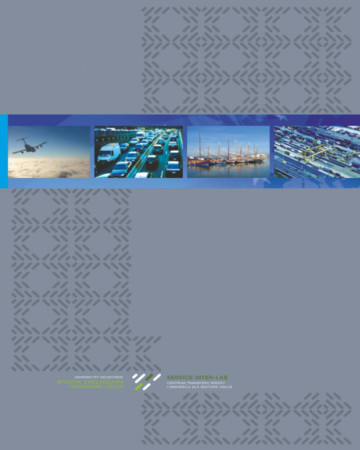
ISSN: 1644-275X
eISSN: 2353-3005
OAI
DOI: 10.18276/ptl.2018.41-15


Issue archive /
nr 1 (41) 2018
EFFEKTIVITÄT UND EFFIZIENZ VON TRANSPORTPROZESSEN
(EFFECTIVENESS AND EFFICIENCY OF TRANSPORT PROCESSES)
| Authors: |
Hermann
Witte
Hochschule Osnabrück |
| Keywords: | effectivity efficiency transport transport process processes |
| Data publikacji całości: | 2018 |
| Page range: | 14 (163-176) |
| Klasyfikacja JEL: | L91 |
Abstract
In this article it is demonstrated that the effectivity and the efficiency of transport processes are measurable.
Basis of the measurement procedure are the definitions of transport processes, the effectivity
and the efficiency. We have to make a difference between two definitions of efficiency. First there is the
well-known economic efficiency. Second we have to regard the spatial efficiency of a transport process.
The spatial efficiency of a transport process can be the precondition for the economic efficiency of the
process. The measurement of the effectivity and the efficiency of transport processes are demonstrated
using the basic structures of transport processes: the straight (direct) process, the converging process,
the diverging process and the regrouping process. With a spatial efficiency of one the straight (direct)
process is the best model for planning transport processes. This result is not surprising. In a straight
(direct) process all transport distances are equal with the air distance (beeline). All transport processes
which are different from the air distance have less spatial efficiency.
Download file
Article file
Bibliography
| 1. | Bökemann, D. (1982). Theorie der Raumplanung. München–Wien: Oldenbourg. |
| 2. | Boustedt, O. (1975). Grundriß der empirischen Regionalforschung, Teil I: Raumstrukturen. Hannover: Schroedel Verlag. |
| 3. | Comanor, W.S., Leibenstein, H. (1969). Allocative Efficiency, X-Efficiency and the Measurement of Welfare Losses. Economica, 36, 304–309. |
| 4. | Drèze, J.H., Hagen, K.P. (1978). Choice of Product Quality: Equilibrium and Efficiency. Econometrica, 46, 493–513. |
| 5. | Ducruet, C., Rodrigue, J.P. (2017). Graph Theory: Measures and Indices. Abgerufen am: https://transportgeography.org/?page_id=5981 (21.02.2017). |
| 6. | Garrison, W.L. (1960). Connectivity of the Interstate Highway System. Regional Science, 6, 121–137. DOI: 10.1111/j.1435-5597.1960.tb01707.x. |
| 7. | Laschet, W., Witte, H., Voigt, F. (1979). Ansätze zu einer optimalen Strecken- und Netzplanung der Deutschen Bundesbahn. Dargestellt am Beispiel Nordrhein-Westfalen. Opladen: Westdeutscher Verlag. |
| 8. | Leibenstein, H. (1966): Allocative efficiency vs „X-efficiency“. The American Economic Review, 56, 392–415. |
| 9. | Prihar, Z. (1956). Topological Properties of Telecommunication Networks. Proceedings of the IRE, 44, 927–923. DOI: 10.1109/JRPROC.1956.275149. |
| 10. | Rodrigue, J.P., Comtois, C., Slack, B. (2006). The Geography of Transport Systems. London–New York: Routledge. |
| 11. | Rodrigue, J.P., Comtois, C., Slack, B. (2017). The Geography of Transport Systems, 4th ed. London–New York: Routledge. |
| 12. | Witte, H. (2015). Regionale Gleichgewichte. Zeszyty Naukowe Wyższej Szkoły Bankowej w Poznaniu, 5 (62), 13–29. |